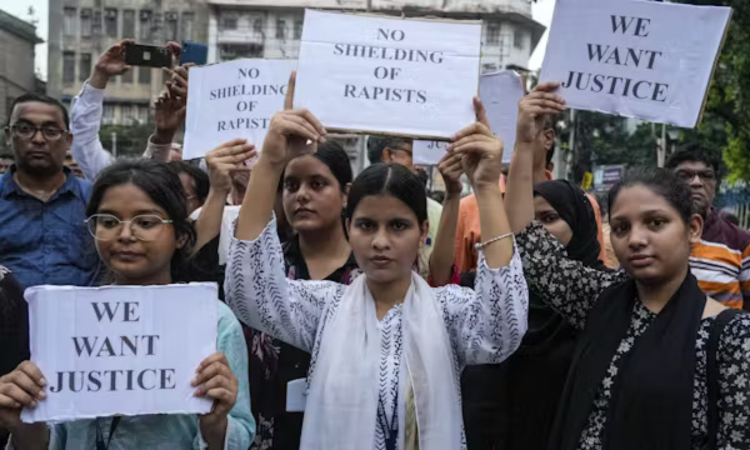Cultural Reckoning: Why rape culture still persists today
In the UK, rape culture appears in the normalisation of harassment in schools, in suggestions that victims share blame, and in family courts where violence against women can be written off as pranks or misunderstandings

Rape protest
Rape is widely condemned and carries heavy penalties, yet criminologists still say we live in a “rape culture”. The term describes societies that accept or normalise rape and sexual violence. It refers to “a set of beliefs that encourage male sexual aggression and support violence against women”, where such violence is dismissed, minimised, or even sexualised.
In the UK, rape culture appears in the normalisation of harassment in schools, in suggestions that victims share blame, and in family courts where violence against women can be written off as pranks or misunderstandings. It surfaces in myths such as “men can’t be raped” and in victim-blaming narratives like “she was asking for it because of how she was dressed”. These ideas allow sexual violence to continue unchallenged.
In 2024, police in England and Wales recorded 71,227 complaints of rape. Only 2.7% resulted in charges, and roughly half of those led to convictions. The Crown Prosecution Service only takes forward cases with a “realistic prospect of conviction”. Rape culture erodes that prospect, shaping how victims are perceived and how courts interpret their actions, histories and identities.
Common myths dictate how a “real” victim behaves: whether they should appear traumatised, quiet, pure or uninterested in sex. If a victim is sexually active, uses kink, or continues to interact with the perpetrator, their credibility is often questioned. Meanwhile, claims about the supposed harm of false accusations create reluctance to label a man a rapist, particularly if he is well-liked.
Rape culture harms everyone. It means sexual violence against any gender is taken less seriously, and it polices sexuality through shame. Challenging it requires consistent action in daily life.
One approach is to be an active bystander. This does not mean confronting abusers directly, which may be unsafe. Programmes such as Right to Be’s “5 Ds” suggest strategies: distracting the victim to interrupt the situation; delegating to someone with authority; documenting the incident if safe; checking in with the victim afterwards; or directly addressing the behaviour briefly before turning attention to the person harmed.
Another is to make sex unexceptional. Shame and taboo fuel the myths that support rape culture. When sex is treated as morally charged and secretive, people create rigid narratives of what “real” rape looks like. Yet a victim can have a history of sex work or fantasies and still be raped. They can know or even be in a relationship with their attacker. Removing the salaciousness from sex helps us distinguish consensual encounters from coercive ones. Talking about sex ordinarily, rather than as something sordid, helps dismantle these myths and clarifies understanding of consent.
Education without stigma is also essential. Many young adults lack a full understanding of consent. Some do not know that rape can occur within committed relationships, or that practices such as removing a condom without consent are criminal. Honest, unembarrassed conversations about sex, boundaries and harm help people recognise sexual violence and feel able to name it.
Rape culture is not about weak women or inherently predatory men, nor about some cultures being violent while others are exempt. Challenging rape culture means confronting our assumptions, dismantling shame around sex, and working toward sexual justice for everyone.
The Conversation



